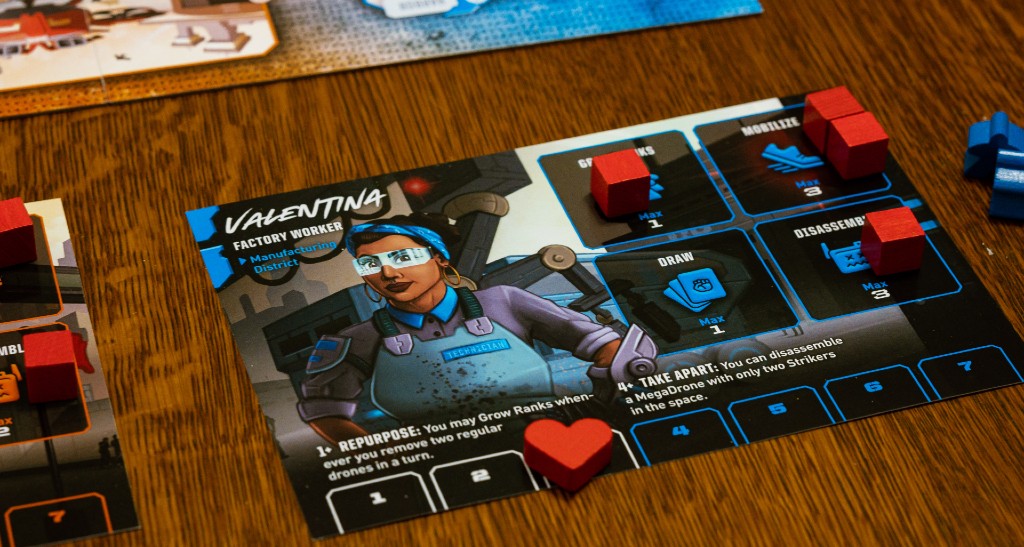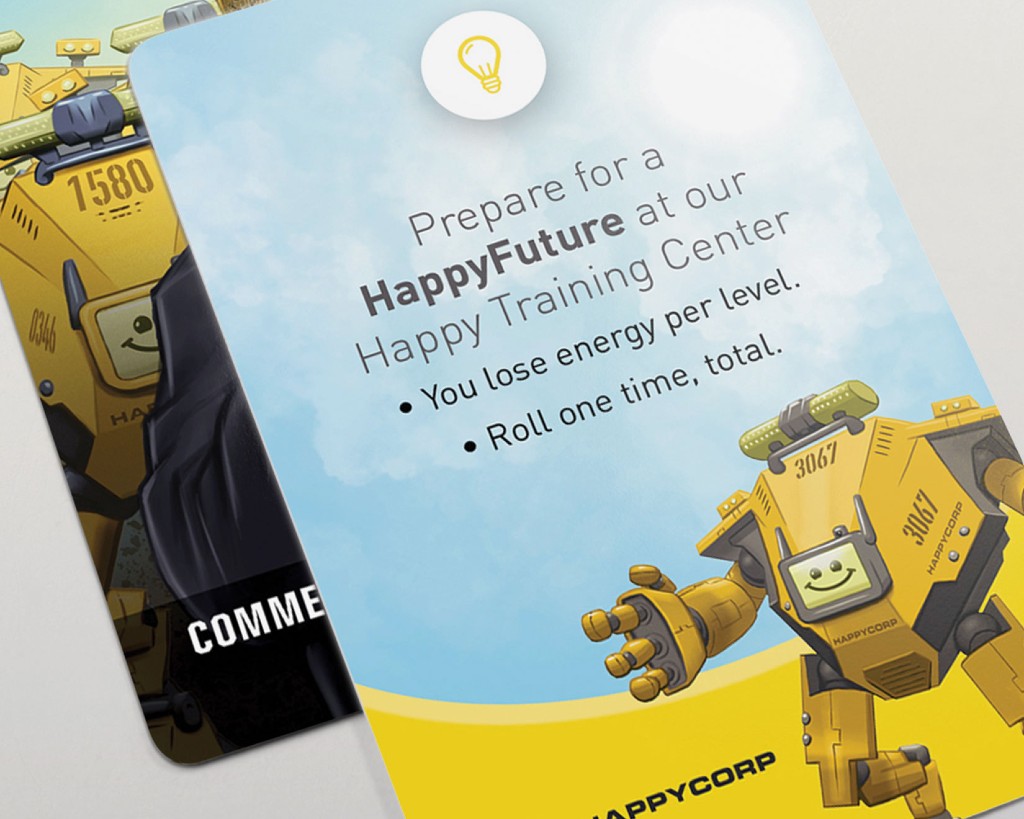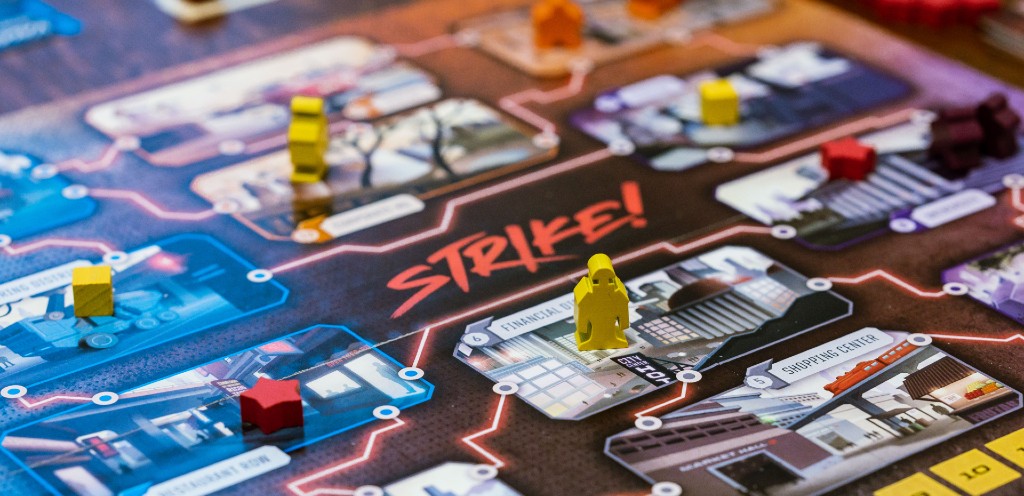Board games are often assembled from the mechanics of games that have come before them. Certain rules and quirks remain because they’ve been proven to work, and gamers can intuit how those elements will impact a new game they’re learning based on how it’s worked in others. What makes them different is the packaging and context through which the game is built. The best ones take those elements and elevate them to something bigger, making you forget that you’ve used these tools playing other games in similar ways.
Strike is a game that adheres to the traditions of cooperative board games, but with a quirk: solidarity. In explaining the game to my comrades I often found myself comparing it to co-op games like Pandemic, explaining the drone mechanics like an outbreak. The four actions you can use is a tried and tested co-op gaming mechanic, so leaning on what you already know works here.
But Strike is also an attempt to make something new while providing the building blocks for a better understanding of the labor movement itself. And with any game that’s made with education in mind, it’s often hard to find the balance between adhering to the subject matter and making a seamless, always-fun experience for players.

Strike is billed as a “game of worker rebellion,” and as players working against a robot-armed corporate monolith, your goal is to move workers around the board in large enough numbers to “strike,” organizing labor while disarming robots meant to put down any uprisings. The city is split into 12 different districts, and eight possible characters start at different spots on the map and have unique abilities that help them recruit strikers, move them around the board or disassemble the drones and megabots that enter districts at the end of every turn.
Winning the game means reaching 15 victory points before those robots: workers get victory points for organizing strikes, while HappyCorp gets points for turning robots into megabots, which fuse after three are in the same district. It’s a game that walks the Pandemic-like line of accomplishing a goal while limiting the damage from a threat that also impacts your ability to reach that goal.
It’s an effective mechanism familiar to people who like board games, but much of Strike‘s appeal is in the world-building. It frames massive tech companies not as convenient saviors, but harmful monoliths that infringe on your rights and control your actions. The bad news at the end of each round is called a Commercial Break, and the cards cheerfully make your life significantly worse in various ways: more robots on the board, limiting your number of moves on your next turn or lowering your overall energy. That energy is used to unlock bonus abilities only each character has, and there’s a significant strategy to deciding which abilities are useful and who to provide with energy while organizing what choices to make.
Cooperative games can always slip into familiar problems of an “alpha” gamer making decisions for everyone, but Strike seems designed to unlearn that and genuinely have players work together. There are a lot of ways to win using a variety of abilities to move around the board, but no one can truly finish the job alone. It’s a game that advocates for action to its core, and that includes encouraging more reluctant players to take part in the strategy and use their unique skills each turn.

It’s faithful accuracy to the subject matter, though, is what can make the game turn into a slog on higher difficulties. That’s kind of the point: labor battles are time-consuming, and the odds are stacked heavily against individuals. Change takes time, hard work, and careful planning. What I truly enjoyed about Strike is that the work felt worthwhile and that progress —gradual as it may be — did feel like it was building toward something.
Two or three players makes Strike a fairly manageable experience and keeps players almost always involved. Playing with four, however, was a different experience that offered far less control of the game’s movement. It also didn’t help that one session started on a much higher difficulty level, which meant we played the entire game from behind and turned it into a certifiable grind. Taking away that intense starting difficulty led to more enjoyable games overall, but the challenge of a game like Strike seems to be fighting through that grind for incremental improvements against increasingly difficult opposition.
That’s not always the case in cooperative board games like this. Sometimes it just feels like you’re drowning or simply trying to run out the clock. Strike is a game that, as you move people around the board and work together to organize strikes, feels like you’re creating something while staving off the forces that are attempting to prevent just that. For some, that may be a bit too on the nose for life in the present moment. But a board game that actually appreciates the labor behind moments is certainly an accomplishment, especially when it makes beating back a mega corporation feel like one, too.

